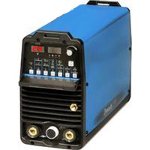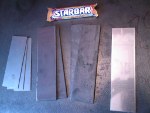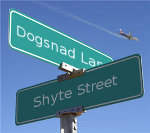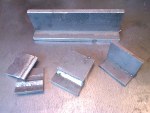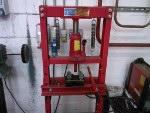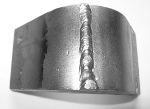Attending a college welding course
Attending collegeA large percentage of people attend further education to improve themselves. Indeed, most of the people I met, at a recent college welding course, were seriously hungry for more weld-time. Having just completed a City & Guilds welding course, I can't really define what made me do it. I'm strictly a hobbyist welder, but, I'm glad I attended the course. I learnt far more than I thought I would. I managed to; broaden & cement more technical theory in place, tighten up my welding techniques, learn to test welds & I got to play with some really nice kit! The most rare & favourable pleasure of all, for me though, was being able to converse with, openly watch, & learn from, other welders while they worked. Each had their own style and employed slightly different techniques to achieve the same results. The course I attended, ran for 12 weeks, 4 hours per week as an evening session. The evening times were between 5:30 and 9:30. The course cost £400, but there was some talk of this fee being reduced later in the year (as of; May, 2011), to £200, to appeal to a broader audience. City & Guilds Awards in welding are, a vocational course, allowing an individual to directly develop expertise, in a particular group of techniques, or technology, such as practical welding skills. |
|
|
FacilitiesThe tutors, facilities, equipment & consumables were all excellent. I enjoyed the rare opportunity of using different (3 phase) professional equipment, to that which I have at home. Some of the equipment, at the college I attended, is listed below:
|
AudienceA large portion of the people, that attended, were paid to be there by the companies they work for. However a few off-beat individuals do attend (like myself) and, unlike myself, often have quite interesting back-grounds & reasons for attending. There would be up to 12 individuals at an evening session, and this number will largely depend on the college's facilities (number of welding machines). Quite often, not all of the students would turn up, even though their time has been pre-paid for, which left more space and equipment free for the rest of us. Even with only half the people attending; the tutor is fairly busy during these sessions. Everyone has a choice about what processes they want to do (unless a certain process is specified by a company that sends their employee there). I tried to get as much done, as possible, and competed with myself for all 4 processes on offer; TIG, MIG (MAG), MMA & Oxy-acetylene (the latter also included brazing). There are options for full-time (day) & part-time (evening) courses at most colleges. Funding may also be available if one is currently unemployed, or one lives in a certain area. [1]
|
|
|
Which processes should I choose?Matt1978 (a highly respected industry professional & forum member): “Gas welding is seldom used in industry now and as such is a dying skill. However, if you can gas weld, then you will be more likely to pick tig welding up easier. MIG welding is mainly used on heavy production, especially structural steelwork. It is also used a lot in automotive construction/repair as well as run of the mill sheet metal fabrication. Tig and MMA welding are still regarded as the highest skilled processes and are used extensively on pipeline construction, power stations and oil industry etc etc.” [2] |
What can one expect from the course?Some people take 12 weeks, to do an entire level 2 MMA (arc welding) qualification, while others, can get through 2 or 3 processes, in different levels, without too much difficulty. The time it takes to complete a level, will, largely depend, in the first place on one's tutor. After that; aptitude, enthusiasm & experience will dictate one's ability & progress. It would be wrong to keep an individual on 'level 1 MIG' if they have paid for a 12 week course and clearly already possess the skills to go much further in that time. The official line is that; in each level, & in each process, it should require an average individual, 70 hours to complete. In 'level 1' MIG welding (one of the easiest processes to pick-up), it took me an hour to complete all 5 test pieces. I would class myself as an average welder. During the practical sessions, one is left alone to; cut metal, sharpen tungstens, clean MIG shrouds, notching, guillotining, welding machine set-ups, gas usage, etc. The written exams, at the completion of the practical pieces, are split into 2 sections; Health & Safety and Welding process specific questions. There is only a pass, or fail, grade.
A “Health & Safety” information booklet, is delivered with the exam, as well as “an introduction to each welding process”, both of which contain most of the information required, in order to complete the written exams. All metal (called “coupons” for welding), use of tooling, tuition & equipment is provided within the course structure. |
|
|
Is my welding good enough to pass?If you are not used to testing welds; practice by trial and error is the usual method employed. The tutor, curriculum and faculty fully encourage this practice. In hind-sight; this is one of the benefits of attending such a course. While there; I have had some some fantastic looking welds fail dismally, while some average looking welds pass with flying colours. There is no superficial way to tell if a weld is good, or not (apart from actual testing), unless one is an experienced welder laying the beads down with knowledge and utilising the correct techniques. College tests include; visual inspection, root/face bend, side bend, nick break, macro & cupping. See here for more information. [3] |
Some general advice, is offered, if you plan on attending
|
|
|
|
|
|
|
|
|
|
|
|
Qualifications & careersFrom what I can gather; City & Guilds welding qualifications are commonly recognised, or at least have some equivalent, in most English speaking countries. One level 2 qualification is, according to City & guilds, roughly equivalent to grade A – C GCSE (general certificate of secondary education). I would concur, however, that 'level 2's' teach, and state, that one can weld to a competent standard for general purpose welding (i.e. Not pressure vessels, etc.). Equivalent courses include [6]:
For more information on “Qualification Types”, see here. [7] For more information on “City & Guilds Qualification Levels”, see here. [8] For more information on “The Qualifications and Credit Framework - (QCF)”, see here. [9] With the practical aspects of welding aside; having recent qualifications, on one's CV, certainly shows current industry knowledge & a continued interest in the subject. Two things that are sure to impress any decent employer. Most of the welders I spoke to, said that when applying for employment positions, in the UK, as a first-time welder, CV's & qualifications are merely viewed as "an indication of potential", but typically, a "trade test" will be required, to see if a potential employee can weld to a competent standard. At the higher, more professional levels of welding employment, employers like to see varied experience and the employee having completed some "coded" work experiences in their career. As a career welder; starting salaries may range from around £15,500 to £17,500 a year with first year craft apprentices starting at between £8,000 and £10,000 a year. Qualified welders are likely to earn on average £23,000 a year although this can be higher with overtime and shift work. Highly skilled welders with specialist qualifications or those carrying out specialist work overseas or underwater work, can earn over £31,500 a year. [10] See if there's a college course in your area. [11] |
|
Further information
|
Useful links
|
Source references
|

